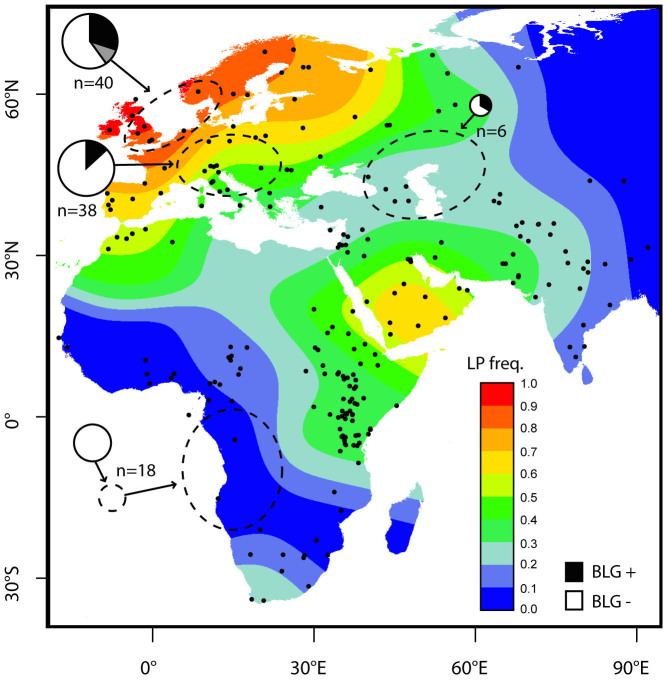Figure 1. Locations of historic populations analyzed in this study and contour map of present day lactase persistence frequency inferred from LP frequency data.
Archaeological dental calculus samples analyzed in this study were selected from regions (dashed ovals) where present day LP allele frequencies are high (Northern Europe: Britain, Norway, Denmark), moderate (Central Europe: Germany, Hungary, Italy), low (northern Southwest Asia: Armenia, Russia), and very low (Central West Africa, buried on the island of St. Helena). Pie charts for each region are scaled by sample size and indicate the proportion of individuals from each region testing positive for milk BLG peptides (black) in dental calculus. A pooled sample of five individuals from Norway testing positive for BLG is shown in gray indicating the uncertainty of the number of BLG+ individuals. Interpolated contour map of lactase persistence frequencies were generated from allele frequencies of all 5 known LP causal alleles (-13907*G, -13910*T, -13915*G, -14009*G and -14010*C) in present day populations in Europe, Africa, and northern Southwest Asia. The map was generated with the R statspat package32 using published data available as of March 2014 (see Methods section). Data points are shown as dots, and interpolation may be inaccurate where there are few data points.

